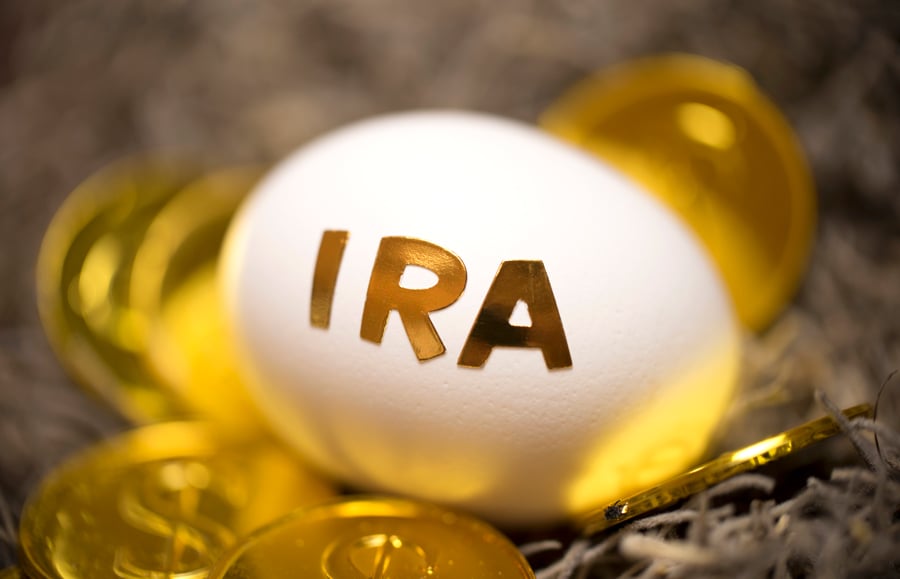

Congress might have inadvertently created a loophole for COVID-19 retirement account distributions to be used to fund Roth IRAs but — advisers are recommending against it.
That kind of transfer would let account holders take advantage of considerable tax breaks — largely because taxes on those distributions can be paid over three years. But that almost certainly is not what law makers had in mind when they passed the CARES Act.
“I actually cannot come up with any technical reason, looking at the law, why this wouldn’t work,” said Jeffrey Levine, director of advanced planning for Buckingham Wealth Partners, speaking Thursday during a webcast hosted by The American College of Financial Services. But, “it’s so grossly in violation of the spirit of what is trying to be done that I’m not recommending it to anyone.”
While the idea of using COVID-19 eligible distributions to fund Roth IRAs might be tempting, especially while the market is down and tax liabilities are therefore lower, it is risky, if not just ethically questionable.
“I actually think it is very easy to draw up an IRS reading where this will not work,” said Jamie Hopkins, director of retirement research at Carson Group, in an email. “I am recommending against this strategy as I think it carries a decent amount of risk. It is clearly outside of the spirit of the law.”
Under the CARES Act, people who are physically or financially affected by the pandemic can be eligible to take penalty-free withdrawals of up to $100,000 from their qualified retirement plans. Plan loans were also expanded to $100,000 under the new law.
“The law was written quickly, but it’s about providing relief to Americans suffering from the COVID-19 pandemic,” Hopkins wrote. “Pushing the limits of the rules brings risk, especially as politicians have started to talk more and more about reviewing abuses of the CARES Act provisions.”
While the CARES Act doesn’t specifically address the idea of funding Roth IRAs with COVID-19 distributions, it is something the Internal Revenue Service could provide guidance on, Ed Slott, president of Ed Slott and Company, wrote in a column for InvestmentNews Tuesday. Both Congress and the IRS could view the practice as abusive, Slott wrote.
Alternatively, retirement savers could potentially direct these distributions to Roth IRAs as a way of “paying back” the distributions, with the transaction being treated more like a conversion, Hopkins wrote.
“This to me would then require the taxes to be paid at the time of the conversion. The timing could matter to some degree also,” he wrote. “If you are doing just a conversion and using the CRD to pay the taxes, and then repaying it at some point, this likely would work.”
The CARES Act was passed in order to help provide relief during an emergency, and there is an ethical responsibility to follow the spirit of the law, he noted. “However, advisors need to put their client’s best interests first, so if there is a legal strategy available to put them in a better position, there is a duty to consider this strategy.”
The law also exempts account holders from having to take required minimum distributions, and those who took RMDs beginning in February can undo them. That didn’t provide an option for people who took RMDs in January, but using COVID-19 distributions to put that money back is an option, advisers said.
Nonetheless, that option will probably not apply to many people.
“IRS guidance allowing Feb. 1 and onward rollovers past the 60-day time period out until July 15, 2020 really lessens the need for CRD use to undo early year distributions that were once thought to be RMDs,” Hopkins wrote. “While CRDs can be used to undo certain distributions, I don’t expect it to be needed as a huge strategy for undoing RMDs.”
For some clients who are not taking RMDs, Roth conversions are an option, said Monica Dwyer, Monica Dwyer, vice president at Harvest Financial Advisors, in an email.
“Some of my clients are using this as an opportunity to do Roth conversions to fill up the next tax bracket, usually 12%, depending on their situation. Obviously, this could be done in combination with a Qualified Charitable Distribution,” Dwyer wrote. “My only clients that have done Coronavirus-related distributions have done so based on need and not used that money to fund a Roth IRA.”
Things could also change in light of the HEROES Act, which is currently in Congress. That legislation could suspend the 60-day and one-per-year IRA rollover limits for 2020 and 2019, Hopkins noted.
“If this gets done, there is not really any reason to use the CRD to do rollovers, so I would suggest most advisors just hang tight on this for now instead of pushing the limits of the CRD,” he wrote.
That change to RMDs could be popular, though it would mean a headache for certified public accountants, Levine said.
“We could see RMDs retroactively waived for 2019. I couldn’t see a bigger disaster from an operations standpoint,” he said. “This is the tax season that will never, never end.”

Relationships are key to our business but advisors are often slow to engage in specific activities designed to foster them.

Whichever path you go down, act now while you're still in control.

Pro-bitcoin professionals, however, say the cryptocurrency has ushered in change.

“LPL has evolved significantly over the last decade and still wants to scale up,” says one industry executive.

Survey findings from the Nationwide Retirement Institute offers pearls of planning wisdom from 60- to 65-year-olds, as well as insights into concerns.
Streamline your outreach with Aidentified's AI-driven solutions
This season’s market volatility: Positioning for rate relief, income growth and the AI rebound
